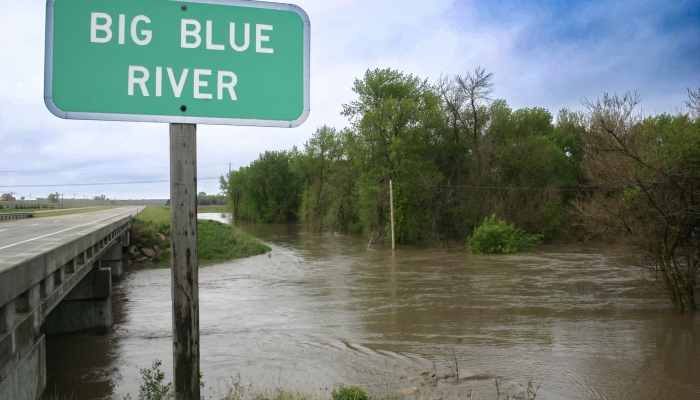A River Runs Through It
Blue Basin River compact creates shared stewardship
When a river crosses state lines, things can get complicated. Who is responsible for the water that ends up downstream and who has claim to it at points along the way? Since 1971, an agreement has existed between the State of Nebraska and the State of Kansas to answer these questions and others regarding water crossing the state line. The Big Blue River Compact was established to divide the responsibility for caring for the Big Blue and Little Blue Rivers, as well as their tributaries, and to determine fair usage for both states. The compact puts rules around quality and quantity concerns, to ensure that there is sufficient water for all users for years to come.
This work is especially important during times of drought. The state compact details water allocation and streamflow maintenance protocols, to ensure each state gets its fair share. The Big Blue River basin is geographically unbalanced, with about 75 percent of it being in Nebraska. The compact agreement allows for regular conversation and a collaborative approach to water management that ensures better stewardship of natural resources, as well as continued positive interactions between Nebraska and Kansas.
A compact meeting is held each spring with representatives from both states discussing the state of the river. These are open meetings and may be attended by any interested members of the public. Topics that have been discussed at recent meetings include precipitation and irrigation impacts on water supply, sedimentation concerns, further development in the compact area, regulations concerning use of water in the basin including permits, and hydrologic goals for the basin.
Full details about the compact can be found at https://dnr.nebraska.gov/water-planning/big-blue-river-compact.


